
Official Edgar Rice Burroughs Tribute and Weekly Webzine Site Since 1996 ~ 15,000 Webpages in Archive Issue 0611 ERBzine Silver Screen Series ~ ERBzine 0502 Presents TARZAN THE APE MAN 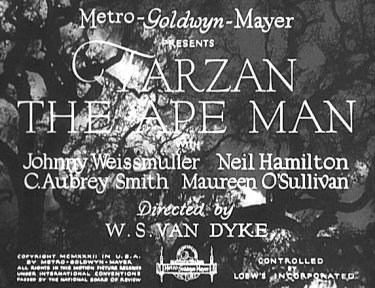 
|

Official Edgar Rice Burroughs Tribute and Weekly Webzine Site Since 1996 ~ 15,000 Webpages in Archive Issue 0611 ERBzine Silver Screen Series ~ ERBzine 0502 Presents TARZAN THE APE MAN  
|
|
BACKGROUND NOTES In 1931 Metro-Goldwyn-Mayer was in possession of much leftover jungle location footage from their very successful Trader Horn film. Ralph Rothmund of ERB, Inc. suggested that all this African footage might be used for a Tarzan film. Metro agreed and, acting under Louis B. Mayer's instructions, young production head Irving Thalberg obtained rights from ERB Inc. for two Tarzan films. The next step was to send director William S. Van Dyke in search of an actor to portray the apeman. During this star search, "Woody" Van Dyke often said, "What I want is a man who is young, strong, well-built, reasonably attractive, but not necessarily handsome, and a competent actor." |
|
TRIVIA The day after ERB, Inc. general manager, Ralph Rothmund, firmed the MGM/Tarzan deal, ERB celebrated by buying five cars -- one for each member of his family. |
Directed by: W.S. Van Dyke
Writing credits: Edgar Rice Burroughs (novel) ~ Cyril Hume (adaptation) ~ Ivor Novello (dialogue)
Produced by Bernard H. Hyman and Irving Thalberg
Cinematography by Clyde De Vinna and Harold Rosson
Film Editing by Tom Held and Ben Lewis
Art Direction by Cedric Gibbons
Sound Department: Douglas Shearer (recording director)
Filming Location: Toluca Lake ~ North Hollywood, California
USA (English) ~ Black and White ~ 99 minutes
Genre: Action / Adventure
Taglines: Mothered by an ape--He knew only the law of the jungle--to seize what he wanted! An original M.G.M. Hit - Greatest of All!
Premiere: 5 March 1932 Capitol Theatre, New York, New York, USA
Plot Summary: James Parker and Harry Holt are on an expedition in Africa in search of the elephant burial grounds that will provide enough ivory to make them rich. Parker's beautiful young daughter Jane arrives unexpectedly to join them. Harry is obviously attracted to Jane and he does his best to help protect her from all the dangers that they experience in the jungle. Jane is terrified when Tarzan and his ape friends first abduct her, but when she returns to her father's expedition she has second thoughts about leaving Tarzan. After the expedition is captured by a tribe of violent dwarfs, Jane sends Cheetah to bring Tarzan to rescue them... ~ Summary written by Gary Jackson
Jiggs – Cheetah uncredited
Ray Corrigan – Ape uncredited
Johnny Eck- Bird Creature uncredited
![]()
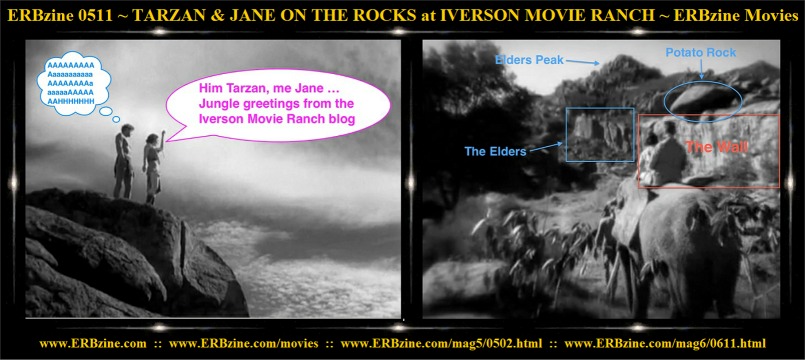
![]()
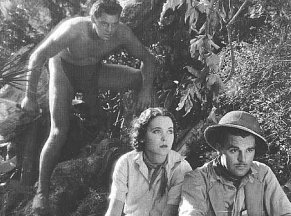
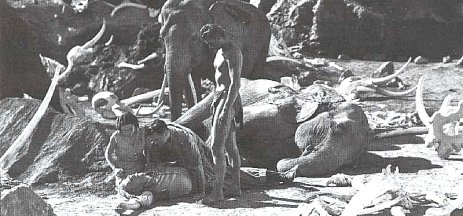
IMDB User Comments:
David Atfield ~ Canberra, Australia
Summary: Bizarre and sexy - should have been a silent film. It has to be said - this is a very strange film. A proper young English lass is kidnapped by a white man who, for reasons never explained in this version, lives with the apes. She instantly falls in love with him and gives up everything to swing through the trees with him. Hardly the kind of thing America in the early thirties would have thought proper. Which makes this film quite subversive - and Johnny Weissmuller is practically naked! His beauty, particularly in body shape and skin tone, is special - but so too is the performance of Maureen O'Sullivan. With Weissmuller monosyllabic at best, it is left to O'Sullivan to convey most of the story - and she does it with great grace and charm - and quite a bit of sex!All that aside, there is some remarkable animal footage - sometimes with the actors and at other times with obvious doubles. There is a band of marauding pygmies (basically dwarves in black make-up) that has to be seen to be believed! The hardest things to take in this film though are its racism (the whites whip their black servants, and, when O'Sullivan's dad says that Tarzan has no real human feelings, O'Sullivan explodes "But he's white"!), and the rather fake animals used in certain scenes - particularly the men in ape suits. There is also some really bad rear projection. But, if you can ignore all that, there is much to enjoy and Cheeta the chimp is very cute.
But it is in the silent action sequences that the film really flies. Too often it gets bogged down in static sound sequences - and there is the usual problem with early talkies of too little music. It makes me think what a great silent film this would have been. W.S. Van Dyke was a first-rate visual director with many impressive silent films like "The Pagan" and if we could now just sit back and watch this sexy action film without talking and sound effects, just a great music score, this film could well be considered a masterpiece. But then I guess we would never have heard Tarzan's famous cry.
IMDB User Rating: 6.7/10 (142 votes)OTHER REVIEWS
Doug Pratt's Laserdisk Review
Greatest US Films
At-A-Glance Film Reviews
Movie Mirror
Stomp Tokyo Review
Filmsite Review by Tim DirksThis Film is Referenced in:
Design for Living (1933) ~ Night at the Opera, A (1935) ~ Speaking of the Weather (1937) ~ You Can't Shoe a Horsefly (1940) ~ Hollywood Steps Out (1941) ~ Wackiki Wabbit (1943) ~ Hsing hsing wang (1977) ~ Octopussy (1983) ~ Star Wars: Episode VI - Return of the Jedi (1983) ~ Explorers (1985) ~ Alan Smithee Film: Burn Hollywood Burn (1997) ~ American Beauty (1999)
This Film is Spoofed in:
Hollywood Party (1934) ~ CooCoo Nut Grove (1936) ~ Star Is Hatched (1938) ~ Porky the Fireman (1938) ~ Hollywood Daffy (1946) ~ Gorilla My Dreams (1948) ~ Past Perfumance (1955) ~ Ensign Pulver (1964) ~ Pee-wee's Big Adventure (1985) ~ Short Circuit 2 (1988) ~ Ace Ventura: When Nature Calls (1995) ~ Malèna (2000)This Film is Featured in:
It's Showtime (1976) ~ Sixten (1994) ~ Tarzan: The Legacy of Edgar Rice Burroughs (1996) (TV) ~
This Film is Edited into:
Tarzan, the Ape Man (1959)
Tarzan the Ape Man was remade in 1959 starring Denny Miller and Joanna Barnes:
This movie has little connection with the 1932 original. It does, however, have lifted footage (tinted to more-or-less match the color), including obvious footage of Weissmuller's vine-swinging. Miller is not once called Tarzan in the movie, and his yell is also lifted Weissmuller. The elephants who wreck the pygmy village are lifted/tinted from the original, but the "pygmies" (real in the original) were kids from Fairfax High School in Los Angeles. Costumes are left over from "King Solomon's Mines" so that more stock footage could be lifted. And the crocodile fight is taken from "Tarzan and his Mate"
Tarzan the Ape Man was made again in a 1981 production which featured Bo Derek sizzling with off-beat sensuality as she cavorted with her appealingly shy and muscular ape man lover. Also starring were Miles O'Keeffe as Tarzan, Richard Harris, John Phillip Law, and Steven Strong. [As in the original] this Tarzan story is from Jane's point of view. Jane Parker visits her father in Africa where she joins him on an expedition. A couple of brief encounters with Tarzan establish a (sexual) bond between her and Tarzan. When the expedition is captured by savages, Tarzan comes to the rescue.
|
|
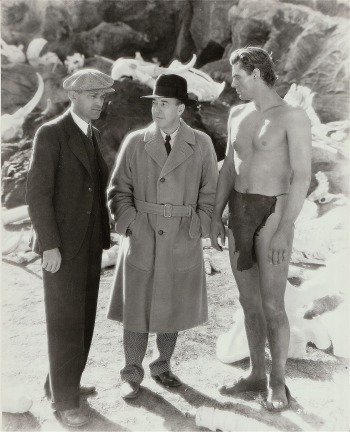
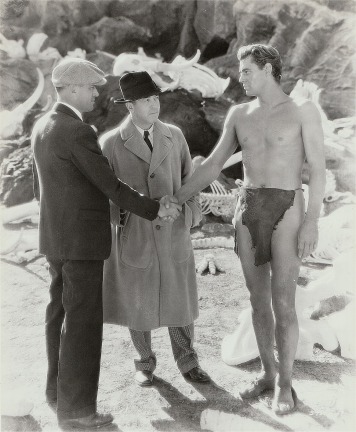
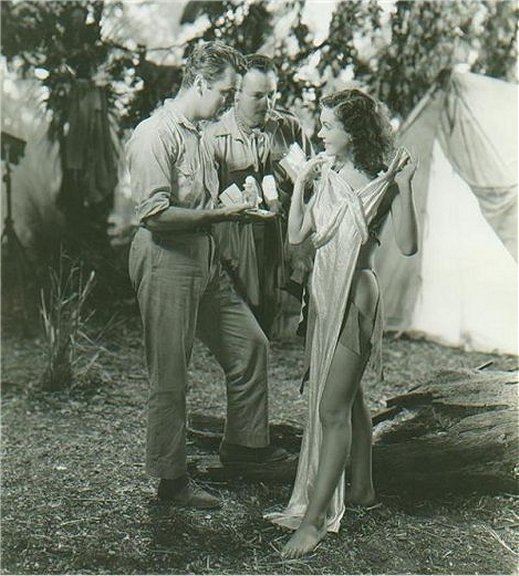
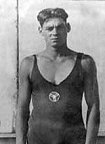
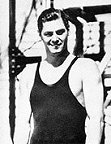
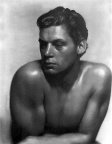
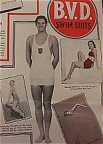
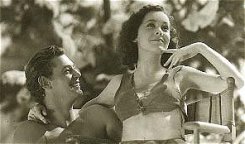
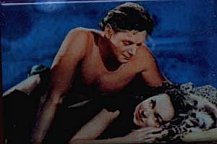

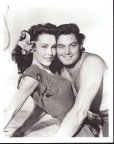
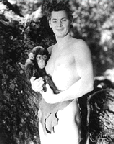
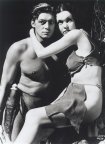
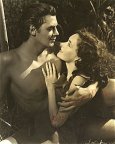
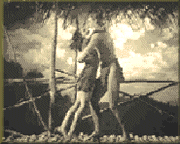
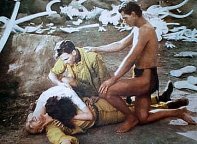
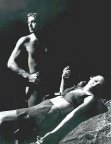
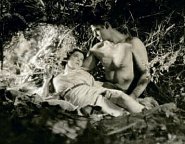
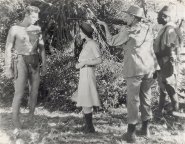

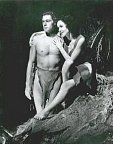
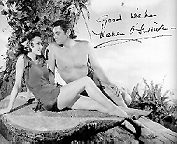
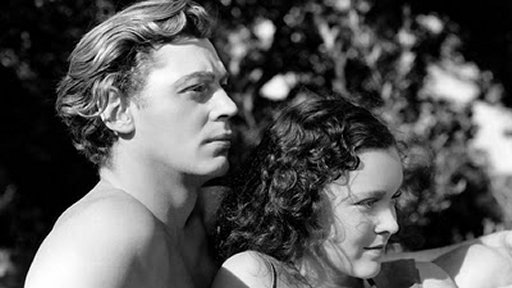
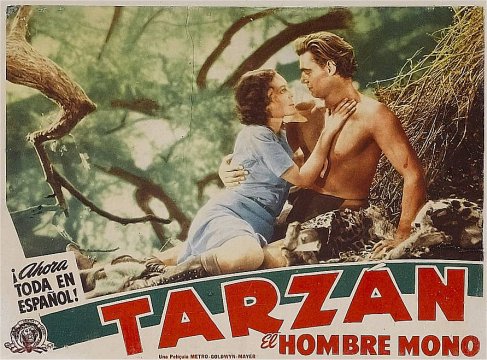
 |
More Reviews ~ Photos ~ Summaries See our Weissmuller sites at: ERBzine 0393 and ERBzine 0394 TARZAN THE CONTROVERIAL Militants Oust 'Tarzan' At Yale Film Festival Jiggs The Chimp's Scrapbook Enter our Lobby Displays of Posters ~ Stills ~ Lobby Cards See Below: |
Reference Links
ERBzine
Silver Screen Series
Internet Movie Data Base
Van Dyke's Horning
Into Africa
Tarzan.org
Filmsite Moments and Scenes
from Great Movies
shill pages
Stomp Tokyo Pictures
from Tarzan the Ape Man
Matt's Tarzan Movie Guide
My Father, Elmo Lincoln
by Marci'a Lincoln Rudolph
ERB of
the Silver Screen - Volume I - The Silent Years by Jerry Schneider
Jerry Schneider's Movie Making
Locations
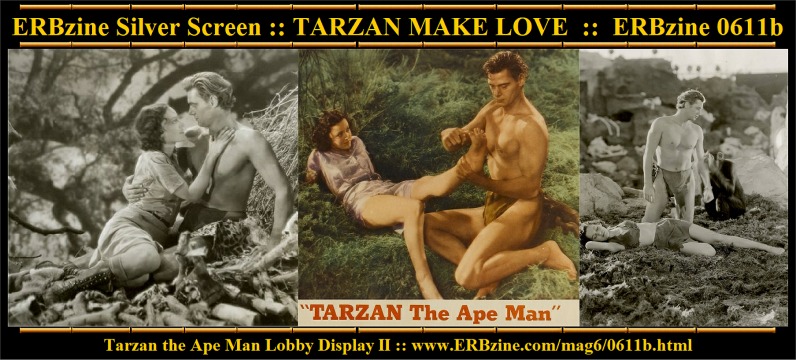
|
The Ape Man |
And His Mate |
Escapes |
Finds A Son! |
Secret Treasure |
New York Adventure |
| . |
Triumphs |
Desert Mystery |
and the Amazons |
Leopard Woman |
. |
|
1a: Tarzan Memories I |
|
|
|
|
|
|
|
|
|
|
|
|
|
|
|
|
MAUREEN O'SULLIVAN TRIBUTE
Hundreds of Photos
|
|
|
|
|
|
|
|
|
|
|
